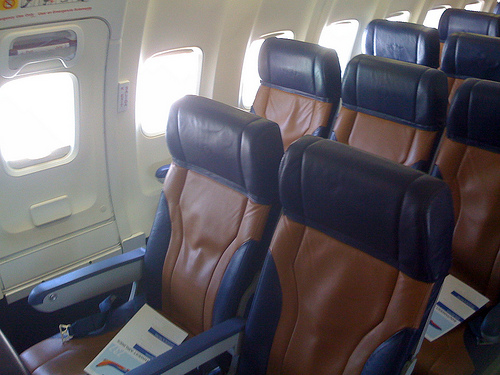Earlier this summer someone I know was told at the airport that, due to her size, she had to buy a second seat. She had to cancel her trip because she couldn’t afford another ticket on the spot. (The story is a bit more complicate than that, but that’s the gist for the purposes of this post.)
I fully support airline policies that state if you’re wider than the seat you purchased, you must purchase a second seat so that you’re not encroaching on anyone’s space and each customer can have the same high-quality flying experience. There’s nothing wrong with this policy. The problem is customers aren’t informed enough at the point of purchase to know whether they need a second seat.

Southwest Airlines is my go-to domestic carrier. They have great prices and generally have a lot of flights to places I want to go. On a recent trip, I flew Southwest and every flight coming and going was delayed. (Grrr.) This gave me a chance to do some premier people watching. It appeared that many people in the airport were on the cusp of being what Southwest calls a “customer of size.” It made me wonder how would a customer know if they qualify as a customer of size.
I had to do some digging, but I found Southwest’s policy on customers of size. Their policy states that each customer must fit into the 17-inch seat with both armrests down or they must purchase a second seat. If their flight is not full, they may receive a refund for their second seat after their flight.
I had to search Southwest’s website to find this information. Given that over 35% of U.S. adults are obese, it makes more sense to put a notice on the reservation page that states that customers who are more than 17 inches wide when seated should purchase a second seat or they will risk being asked to purchase a second seat at the airport. That way the customer is fully informed of the policy when making the purchase and they know the risk they’re taking when if they’re a customer of size and don’t purchase an extra seat.
Apparently Southwest is being sued because they’re not informing customers of its policy or enforcing it uniformly. Kenlie Tiggeman said the reservation page doesn’t inform customers about the customer of size policy and that sometimes she’s forced to buy an extra seat and sometimes she’s not. Â I agree that customers need to know upfront that they need to purchase an extra seat if they are more than 17 inches wide, but there will always be people who are over the limit who don’t purchase a seat who will be allowed to board. Every customer shouldn’t be forced to prove they’re 17 inches wide or less before boarding a Southwest flight.
To enforce the policy more uniformly, I think every airline with a policy regarding large passengers should have an airline seat in the terminal where customers can test themselves and airline personnel can check to make sure a passenger will fit in one seat. Â This provides a fair and objective test for everyone involved.
I feel bad for the customer and the airline representative when there has to be a conversation about a passenger’s size and whether they need a second seat. It’s a situation that must be handled delicately. However, I won’t feel as bad for customers who knew exactly what the policy was before purchasing a ticket and risked being told they had to purchase an extra one at the airport or not fly.